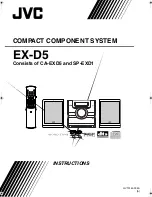
Original Language Version
© Jack Sealey limited
6. operatioN
WarNiNg!
ensure that you have read, understand and apply the Section 1 Safety Instructions.
WarNiNg!
do Not
overload the lift. The maximum load is 680kg.
6.1.
Position the lift in a suitable location, preferably on a concrete surface, capable of withstanding the weight of the motorcycle/vehicle
and the lift.
WarNiNg!
The motorcycle/vehicle needs to be fully supported by the platform prior to lifting. The ramp (#6) is only used to assist the
operator in wheeling the vehicle on to the platform when the lift is at its lowest position.
6.2.
Wheel the motorcycle onto the lift and secure the front wheel into the clamp at the front of the lift.
6.3.
Secure the motorcycle/vehicle to the lift using the eyebolts (#60).
6.4.
The motorcycle lift already has hydraulic oil added before shipping.
6.5.
once connected to the mains power the lift can be used immediately.
6.6.
Remove the sloping plate before lifting the platform.
6.7.
Stand well back from the lift when lifting or lowering platform to avoid danger. Use the control box (fig.1.10) to raise the lift.
6.8.
once at its desired height, lower the lift so that the safety brake engages.
6.9.
Safety brake fig.8
6.9.1.
loWeriNg
6.9.1.1.
Check there are no tools, equipment, cables or hoses under the lift.
6.9.1.2.
The safety brake needs to be manually disengaged prior to lowering. Raise the lift to allow the safety brake to be released.
6.9.1.3.
As the lift is completely lowered, the safety brake automatically engages ready for ascending.
Note: the safety brake only engages once the lift is completely lowered, Not if the lift is stopped during descent and raised
again. in this instance the safety brake muSt be manually engaged .
6.10.
hoW to loWer iN caSe of poWer failure fig.9
6.10.1.
If there is a power failure follow this procedure to lower the lift.
6.10.1.1.
The lift and its load will need to be raised manually, enough to release the safety brake.
6.10.1.2.
Remove the 2 screws which secure the motor box and lift the lid up.
6.10.1.3.
Turn the thumb wheel on the release valve to lower the lift. The rate of descent can be controlled by how far the valve is opened. Close
the valve again.
7.
maiNteNaNce
7.1.
Clean and lubricate on a regular basis.
7.2.
Regularly check oil level via filler hole, fig.1.12. With piston fully down remove filler plug, oil should be level with bottom of filler hole.
Top-up as necessary. Use a good quality jack oil such as Sealey Hydraulic Jack Oil.
do Not
use brake fluid.
7.3.
Ensure no dirt enters hydraulic system when filling or removing/replacing components.
7.4.
Keep the lift clean and wipe off any oil or grease. lubricate all moving parts.
7.5.
Before each use check all parts. If any part of the lift is damaged or suspect, remove the lift from service and take necessary action to
repair.
fig.8
fig.9
NOTE:
It is our policy to continually improve products and as such we reserve the right to alter data, specifications and component parts without prior notice.
importaNt:
no liability is accepted for incorrect use of this product.
WarraNty:
Guarantee is 12 months from purchase date, proof of which will be required for any claim.
Sealey Group, Kempson Way, Suffolk Business Park, Bury St Edmunds, Suffolk. IP32 7AR
01284 757500
01284 703534
www.sealey.co.uk
eNviroNmeNt protectioN
Recycle unwanted materials instead of disposing of them as waste. All tools, accessories and packaging should be sorted, taken to
a recycling centre and disposed of in a manner which is compatible with the environment. When the product becomes completely
unserviceable and requires disposal, drain any fluids (if applicable) into approved containers and dispose of the product and fluids
according to local regulations.
Weee regulatioNS
Dispose of this product at the end of its working life in compliance with the EU Directive on Waste Electrical and Electronic Equipment
(WEEE). When the product is no longer required, it must be disposed of in an environmentally protective way. Contact your local solid
waste authority for recycling information.
m
C680E Issue:1 - 21/09/18






















